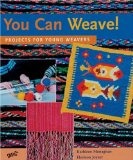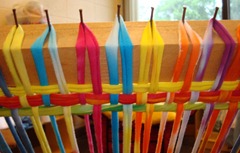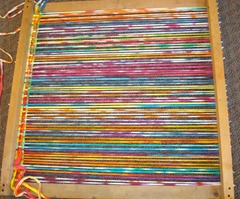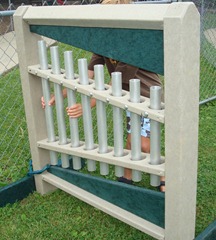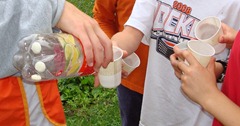 You may have seen baking soda and vinegar in action in a volcano experiment in elementary school or even as an activity at the preschool level. You may even know how to make that volcano. But do you know what the chemical reaction is? Just what’s in those bubbles, anyway? I don’t presume to be a chemistry nerd but here’s what I know.
You may have seen baking soda and vinegar in action in a volcano experiment in elementary school or even as an activity at the preschool level. You may even know how to make that volcano. But do you know what the chemical reaction is? Just what’s in those bubbles, anyway? I don’t presume to be a chemistry nerd but here’s what I know.
Baking soda and vinegar leave you with three things once they’re mixed: carbon dioxide (the bubbles), water, and sodium acetate*. I asked a chemist to find out, but you can just as easily find this information on the web. The friendly chemist assured me that sodium acetate tastes really awful and would be hard to consume in large enough quantities to be harmful. Besides, to make sure nothing amiss happens you should be watching kids who are working with chemicals! Vinegar stings in the eyes and on cuts, but isn’t harmful.
Adding dish soap to the vinegar makes the reaction last a little longer. The bubbles are smaller and seem to appear more slowly. This is a great comparison activity and can be useful for children who are intimidated by all the very active bubbling that takes place when large quantities are being used.
I like to add watercolors to the vinegar so children can see color mixing going on. It doesn’t always mix as quickly as you think it would, particularly if you’re also using dish soap.
When you’re working with young children, be brave enough to use the real words for things. This gives them exposure to new descriptive language for the concepts and also give them “hooks” for learning the information in a different context later. Go ahead and say things like, “chemical reaction,” “sodium acetate,” “reactants,” and so forth. You might feel like a dork at first but you’ll warm up to it.
For the next few posts I’m going to explore what we can do with vinegar and baking soda with the early childhood bunch. It’s a favorite activity starting from toddlerhood and going until, well, adulthood for some of us. I’m sure some of you have creative ideas and I’ve love to hear about them. Feel free to leave links in the comments so other people can see what you’ve done, too.
In my own house, my son likes to make a HUGE pile of baking soda and inject vinegar into it using long droppers. We all end up with very soft hands from the salty scrub that ends up happening. It’s like grainy wet sand by the time we’re done with it!
*For the detail-oriented among you, the the water and carbon dioxide start out as carbonic acid but quickly decompose into the water and carbon dioxide.
